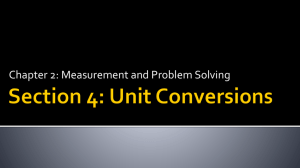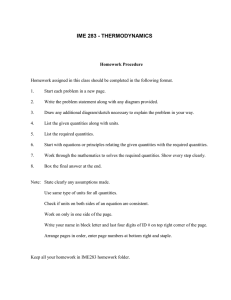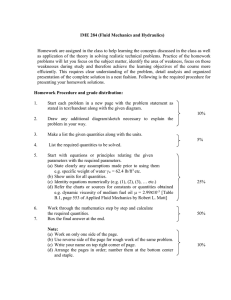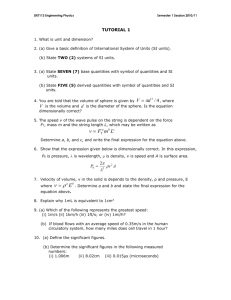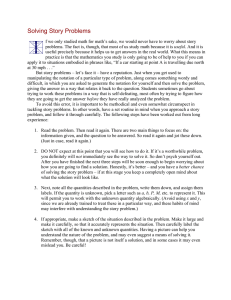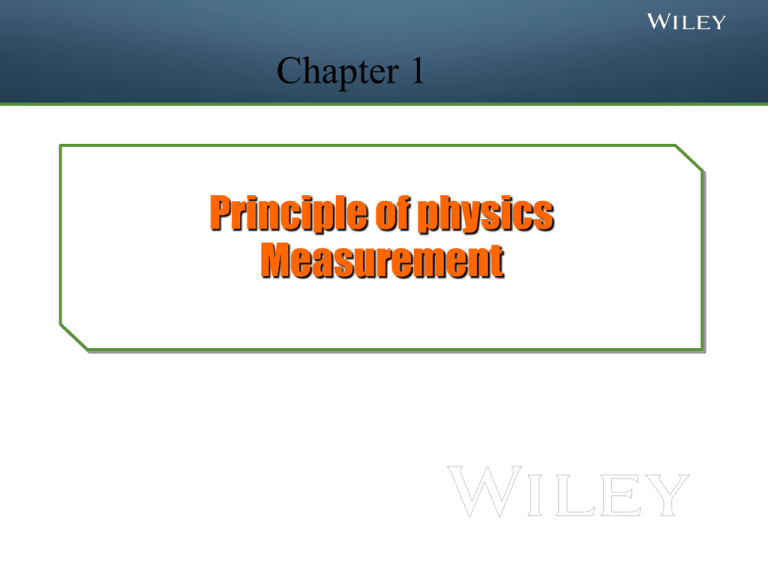
Chapter 1
Principle of physics
Measurement
Copyright © 2014 John Wiley & Sons, Inc. All rights reserved.
What is physics
- A way of describing the physical world
- understanding the behavior and structure of matter
- deals with how and why matter and energy act as they do
- Evaluate explanations of physical phenomena
Quantities Physics
Fundamental Quantities (Basic Quantities)
• quantities cannot be measured in a simpler
form And for convenience they have been
selected as the basic quantities.
• quantities that cannot be defined in any other
physical quantity.
• The units of these quantities are called basic
Units.
© 2014 John Wiley & Sons, Inc. All rights reserved.
Quantities Physics
Table System International (SI) base quantities
basic quantities
quantity
Unit
Symbol
length
meter
m
mass
kilogram
kg
time
second
s
electric current
ampere
A
thermodynamic temperature
kelvin
K
amount of substance
mole
mol
candela
cd
luminous intensity or (Unit of intensity of light)
Quantities Physics
Fundamental Quantities (Basic Quantities)
•The three main fundamental physical quantities
(base quantities) of mechanics are length, mass
and time .
•The SI system have the units meter (m) , kilogram
(kg) , and second (S).
• These fundamental quantities cannot be defined
in terms of more base quantities .
Quantities Physics
Fundamental unit (Basic unit)
• The Meter :- the distance traveled by a beam of light
in a vacuum over a defined time interval ( 1/299 792
458 seconds)
• The Kilogram :- a particular platinum-iridium
cylinder kept in Sevres, France
• The Second :- the time interval between the
vibrations in the cesium atom (1 sec = time for 9 192
631 770 vibrations)
Quantities Physics
Fundamental unit (Basic unit)
Exercise : (Homework) (SI)
The Unit of Length is ………..
The Unit of Time is ………..
The Unit of Electric Current is ………..
The Unit of Temperature is ………..
The Unit of a mount of Substance is ………..
The Unit of Mass is ………..
Quantities Physics
Derived Quantities:
• All physical quantities measured by physicists can
be expressed in terms of the three basic unit of
length, mass, and time .
• When a quantity involves the measurement of 2 or
more fundamental quantities it is called a Derived
Quantity.
• The units of these are called Derived Units.
Quantities Physics
SYSTEM OF UNIT
SI units (used mostly in physics):
length: meter (m)
mass: kilogram (kg)
time: second (s)
This system is also referred to as the MKS system
for meter-kilogram-second.
SYSTEM OF UNIT
Gaussian units (used mostly in chemistry):
•
length: centimeter (cm)
cm = 0.01 m
•
mass: gram (g)
g= 0.001 kg
•
time: second (s)
This system is also referred to as the CGS system
for centimeter-gram- second.
SYSTEM OF UNIT
British engineering system (FPS)
length: foot (ft)
ft = 0.30 m
mass: bound
bt= 0.45 kg
time: second (s)
its easy to convert from system to another .
•
•
•
© 2014 John Wiley & Sons, Inc. All rights reserved.
CONVERSIONS
• You will need to be able to convert from one unit to
another for the same quantity
Km to m (length)
J to eV (energy)
Years to seconds (time)
And between other systems and SI
**Note: through out you should be able to do basic
conversiones now and others will be developed
CONVERSIONS
*1 km = 1000 m (meters)
1kg = 1000 g
1 mile=1609 m
1g = 0.001 kg
1 mile = 1.609km
1cm = 0.01 m
1 inch = 2.54 cm
1 min = 60 s
1 cm = 0.39 inch
1 hr = 3600 s
1 m3 = 1000 L
CONVERSIONS
Example : Convert 3 cm to …….inch ?
Example : Convert 6 inch to ………cm ?
Example : Convert 1mile to ……km ?
Example : Convert 19 km to ………mile ?
Example : Convert 5 mile/hr to ………. m/s ?
Example : Convert 7 m/s to ………. mile/min ?
Example : Convert 2 hrs to ………. s ?
Example : Convert 4 min ………. hrs ?
Scientific notation
Scientific notation employs powers of 10 to write large or
small numbers
Example :
Convert the number to scientific notation
#
897000
= (
)
#
0.000584
=(
)
* What is the difference between the two numbers
-
(4.34 x104 m , 43.4 x 103 m )
-
(0.003 x 10-4 s , 0.00003 x10-6 s)
-
Power of ten prefixes :
Prefix
Symbol
Prefix
Symbol
X=18
exa
E
deci
d
15
peta
P
-2
centi
c
12
tera
T
-3
milli
m
9
giga
G
-6
micro
6
mega
M
-9
nano
n
3
kilo
K
-12
pico
p
2
hecto
h
-15
femto
f
1
deca
da
-18
atto
a




